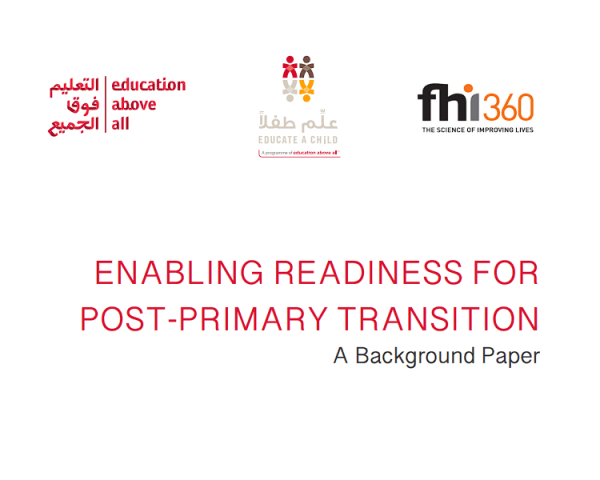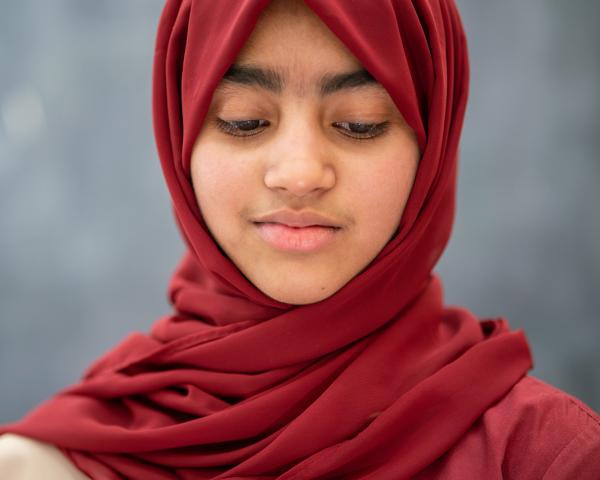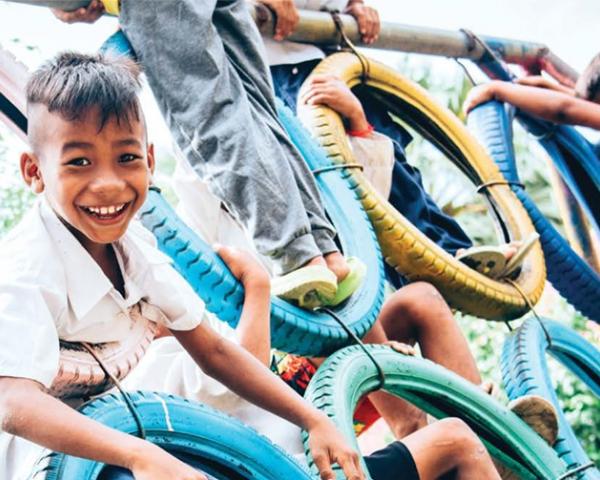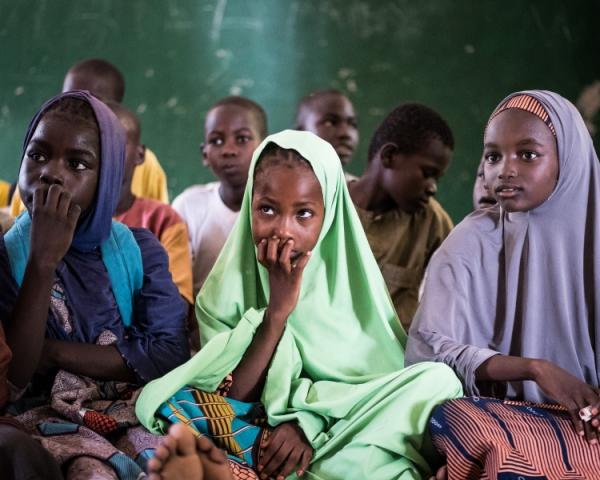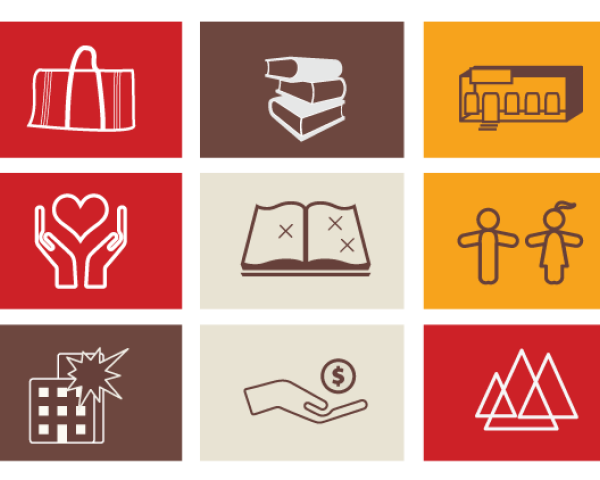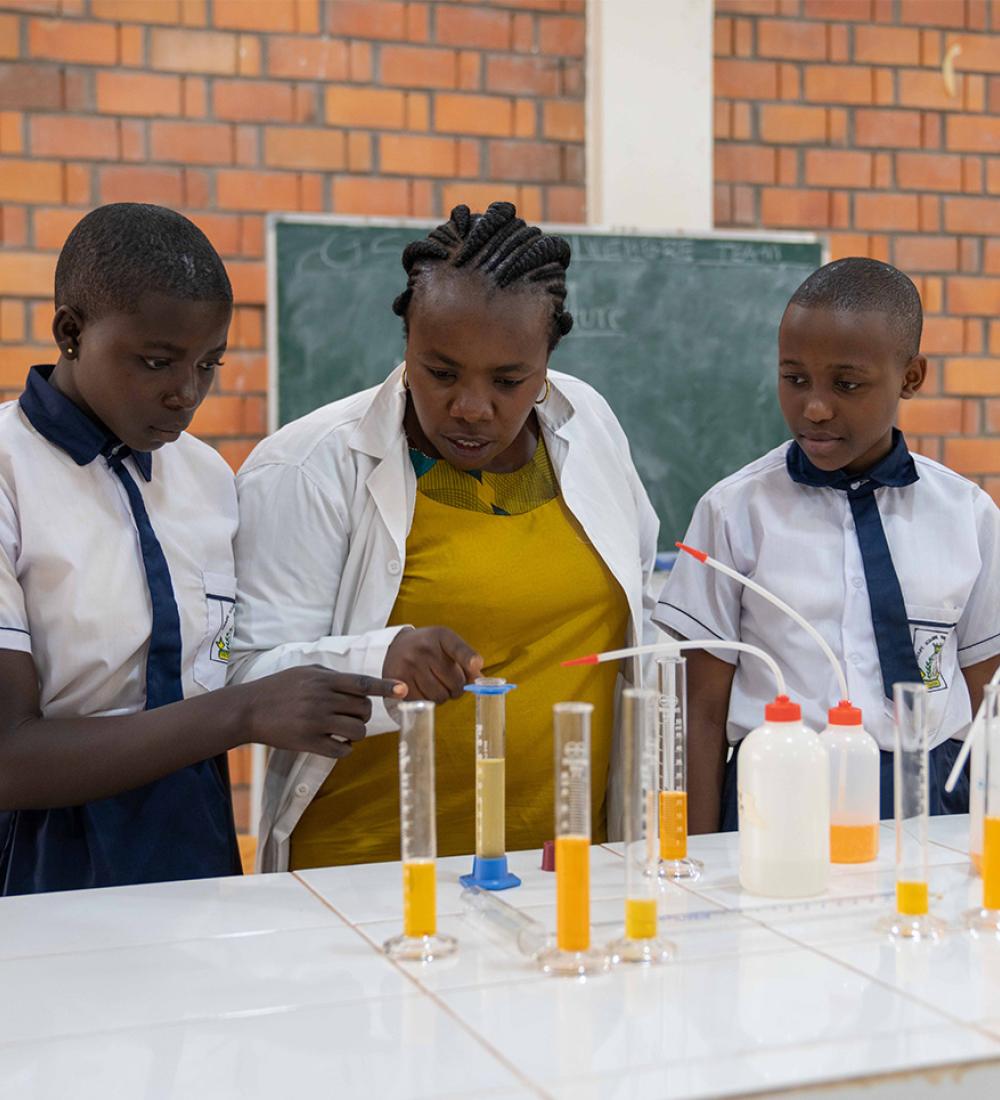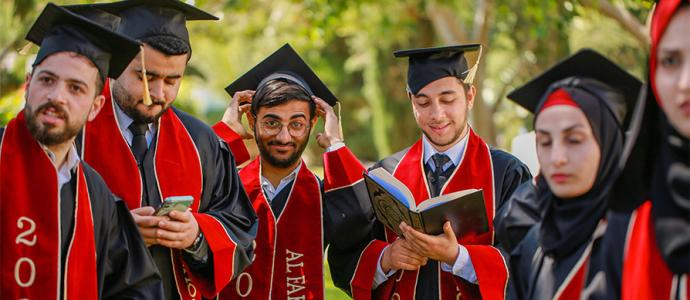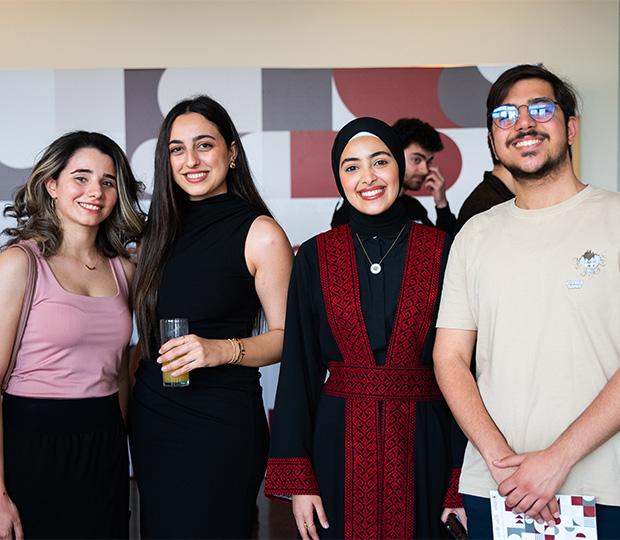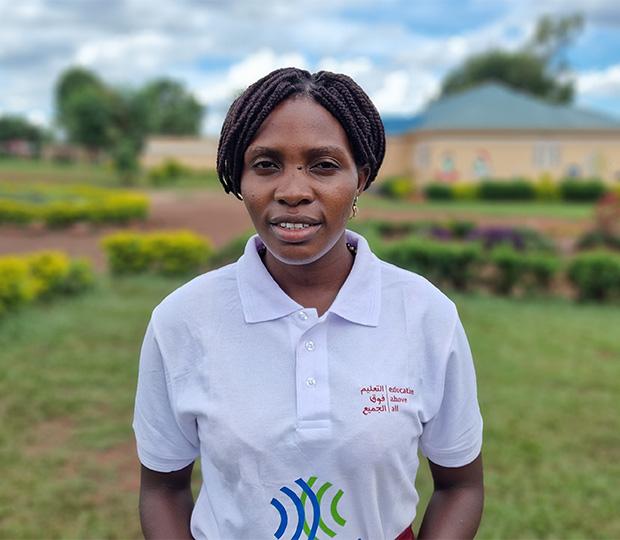Education in the 2030 Agenda: Leaving No One Behind
The side event was enormously successful, as participants and panellists reflected on the protection of the right to education of the most vulnerable and marginalized, as well as suggested ways forward based on best practices.
Some of the presentations from ILO, Plan International, Right to Education Initiative, Global Education Cluster and Lead Researcher on GEM 2019 can be found here.
Presentation by Dr. Kishore Singh
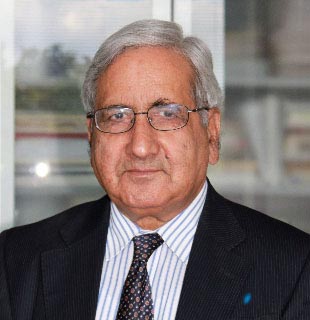
Former United Nations Special Rapporteur on the Right to Education
Today, whole of the international community is engaged in discussions on the implementation of the 2030 Sustainable Development Agenda. In such discussions, we must recall the resolve of the Heads of the State/Government while proclaiming the Agenda at the United Nations Summit in September 2015 that the Agenda is to be implemented “in a manner that is consistent with the rights and obligations of states under international law.” Often, this does not receive enough emphasis. The Agenda manifests collective political commitment. But it clearly requires its implementation to be linked to the legal obligations of States under international human rights conventions. This is especially pertinent as regards the Goal 4 of 2030 Sustainable Development Agenda on Education – SDG4. International human rights conventions lay dawn a normative framework for the right to education. The SDG 4 to - “ensure inclusive and equitable quality education and promote lifelong learning opportunities for all” - must be considered bearing in mind the right to education as an internationally recognized right. This is further elaborated in the Incheon Declaration, adopted at the World Education Forum (May 2015) which underlines the importance of education as a fundamental human right, as a main driver of development and as public good. The Declaration expresses the commitment by the Ministers of Education from all over the world to ensure the provision of 12 years of free, publicly funded, equitable quality primary and secondary education to all free of costs.
Ensuring equality of opportunity in education is a fundamental principle underlying such a framework. However, achieving equality of opportunity in education both in law and in fact is a huge challenge in face of growing inequalities around the world, caused by unbridled neo-liberal economy. This results in increasing disparities and inequities in education and is detrimental to education systems and to the right to education. In keeping with the SDG4, radical measures are required for expanding opportunities for good quality public education, indispensable for creating inclusive education system. Driven by equity-based policies and guided by a human-rights based approach keeping equity quality of education in forefront, this can go a long way in making education system an equalizing force.
...finishing reading Dr. Kishore Singh's presentation here.
ILO Statement
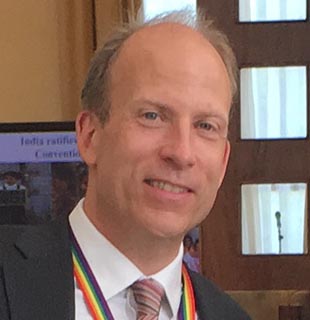
Senior Specialist, Child Labour, Fundamental Principles and Rights at Work Branch ILO
Children comprise more than half of the 65 million people displaced by war. A significant proportion of the 152 million children engaged in child labour live in areas affected by conflict, further increasing their vulnerability to some of the most extreme forms of labour exploitation. Indeed, as the Special Rapporteur has highlighted, child labour rates were on average higher in countries affected by armed conflict: globally, 9.6% per cent of children are in child labour. In countries affected by armed conflict, 17% of children are in child labour.
Across key indicators such as enrolment, attendance and completion rates, abundant evidence demonstrates the major, deleterious effect that child labour has on education. In the core 5–14 age group, 36 million children engaged in child labour were not attending school. This means that approximately one-third of children engaged in child labour were outside the education system.
These figures indicate that the topic of today’s discussion is highly relevant and overdue for increased attention among policymakers. Internally displaced children and children in areas affected by conflict are at higher risk of child labour, and being in child labour compounds the other risk factors highlighted today, further reducing their chances of getting a quality education. It is for this reason that Alliance 8.7, an inclusive global partnership committed to achieving SDG Target 8.7 on the elimination of child labour and modern slavery, including the recruitment and use of child soldiers was launched in 2016.
There is an urgent need to accelerate progress and Alliance 8.7 includes an Action Group on Migration, which provides a forum to increase collaborative action, drive innovation and scaling up solutions and to share knowledge and information and we would like to encourage the participants to join with us in this initiative.
Plan International statement

Deputy UN Representative Plan International United Nations Office in Geneva
Thank you for inviting Plan International to this important discussion.
I would like to share with you some of Plan International’s reflections and recommendations on girls’ education in insecurity and conflict settings based on our programmatic work in countries.
Since the launch of the SDGs, the education of girls and women has remained high on the global agenda. In 2018 alone, concrete commitments to advancing the rights of all girls and women to education were made at a number of high-level events, including the G7 Summit in Canada, the Commonwealth Summit in the UK and the Global Partnership for Education conference in Senegal.
Unprecedented progress in expanding school enrolment has been made over the last decades and gender parity has been achieved, at least at the global level. That said, progress has been slow and uneven, with inequalities among and within countries. Around 132 million girls and young women – about 1 in 5 – were out of school in 2016. For girls living in situations of insecurity and conflict, the figures are far worse, with girls being at least 2 and a half times more likely to be out of school than boys.
We know that in times of crisis, education is often the first service to be suspended and the last service to be resumed. We also know that efforts to address education in crises are mostly short-term, ad hoc and grossly underfunded. In the last decade, the demand for education in emergency settings increased by 126 per cent, but only 4 per cent of the appeals made for ODA or humanitarian appeal funds were met.
When you listen to young women and girls, they are very clear that education is one of their top priorities. This is what Plan International’s recent research on Adolescent Girls in Crisis revealed. This research was informed by and centred upon the voices and experiences of girls in South Sudan, the Lake Chad Basin and the Rohingya refugee camps in Bangladesh.
Let me just share two quotes with you:
“I want to be educated but cannot. This is the biggest barrier in my life.” (Girl, 14, a refugee camp in Bangladesh)
“Tell our parents that school is important,” (Girl, 13, Lake Chad Basin).
The research confirmed that several interconnected factors linked to pre-existing gender and age discrimination often prevent girls from attending school or gaining access to vocational training. In the Lake Chad Basin, for example, 25% of out-of-school adolescent girls blamed household responsibilities for keeping them out of education. Family poverty was also mentioned as a factor in keeping girls out of school. In South Sudan, 39% of girls not attending school said they could not afford to.
Those girls that are able to attend school revealed to us that schools are often not adapted to meet their sanitary needs, and lack proper infrastructure or separate toilets. In our research, girls also talked about the fear of becoming victims of sexual and gender-based violence on the way to and in schools, as another obstacle.
Furthermore, situations of armed conflict and insecurity make emergencies very dangerous for girls, triggering protective behaviours from family members who restrict girls from attending school.
Plan International has significantly expanded its work in emergencies in recent years. In 2018, we had education in emergencies programs running in 25 countries.
Our programs aim to improve both access to, and the quality of education. We coordinate closely with the Education Cluster, and take as a framework the INEE Minimum Standards for Education, developed collaboratively by the Inter-Agency Network for Education in Emergencies. Using the Minimum Standards means ensuring the involvement of all stakeholders in making a reality of gender, and inclusion, in education programming. This gives us the best chance of meeting the needs and protecting the right to education of girls and boys, including those with disabilities, affected by conflict and insecurity.
Let me end with two concrete recommendations. To respond to the needs expressed by girls themselves,
- Donors and host governments should commit to actions – backed by adequate financial resources – to improve the design, delivery, and monitoring of gender-responsive and inclusive education interventions in times of crises. These interventions should adhere to the INEE Minimum Standards for Education.
- Girls and young women themselves must be recognized as critical stakeholders and included in all policy and planning discussions and decision-making processes about their education and future, in both development and crisis settings.
Right to Education InitiativeStatement
Right to Education Initiative
International human rights law is clear that the right to education applies to everyone, at all times. No one loses their human rights in an emergency, because they cross a border, are forcibly displaced, or voluntarily migrate.
In practice, this means that states have well-defined obligations to ensure the right to education through laws, policies, and other measures. For instance, eliminating discrimination and fostering ‘inclusive education’ whereby the education system accommodates and adapts to the specific needs of learners, and not the other way round.
Rightly, a lot of what’s been said today has focused on the normative content of the right to education, that is, what the right to education means when applied to the specific needs of certain groups. But what underpins and strengthens all aspects of the right to education is accountability.
International law is unequivocal that states must implement the right to education in a way that allows for duty-bearers to be held responsible where there are observed gaps between performance and human rights obligations.
States have a legal obligation to ensure the right to education is implemented in a manner that ensures that internally displaced persons, migrants, refugees, girls, people with disabilities, and all people can effectively exercise and claim their rights. An important element of ensuring accountability is providing avenues for people to hold duty-bearers accountable when the right to education is violated, whether through courts, tribunals, or administrative mechanisms.
This may sound aspirational but it is actually part of what states must do to effectively realise the right to education and it is also a human right itself: the right to access justice, the right to a fair hearing, the right to an effective remedy, etc. These rights, like the right to education, don’t disappear if you’re a migrant, refugee, or IDP. In fact, they’re even more important because it is these people whose rights are most likely to be violated.
In order to fulfil this right, states must create a legal right to education. However, our research shows that only 55% of states constitutionally protect the right to education, which in practice is probably even lower, given the myriad barriers rights-holders may face in accessing justice, for example, the lack of legal aid provision.
A good example to highlight is the approach taken by France where the right to education is legally enforceable in courts. But parents can also take their claims to local administrative bodies and the national ombudsperson. All three avenues are competent to overturn discriminatory decisions that exclude migrants from the public education system.
Where states cannot ensure accountability due to conflict, for example, international human rights mechanisms and states through international assistance have an enhanced responsibility to contribute to the upholding of rights.
Without accountability there is impunity. The right to education will never be fully realised until accountability mechanisms are put in place. But this is not an easy task for states. To guide the process, the Right to Education Initiative together with Unesco, have recently published the Right to education handbook. So do please come see me later if you’d like a copy. Thank you.
Global Education Cluster, UNICEF statement
Global Education Cluster Coordinator
UNICEF
Our discussion today has clearly highlighted the massive needs and priorities of children in emergencies. Collective humanitarian action is essential to address today’s enormous education challenges. Simply put, we need to work better together.
Achieving collective action and results necessitates stronger evidence-based assessment and analysis, better joint strategies and response plans linked to longer-term development plans, and reliable monitoring and reporting mechanisms. These functions – which are critical to address growing humanitarian needs - are at the core of the Global Education Clusters’ work, highlighting why the cluster system is as relevant as ever.
Education clusters or education in emergencies working groups are currently formally activated in 23 countries (out of 27 with a humanitarian coordinator in place). There are also cluster-like coordination mechanisms in many other contexts facing or at risk of crisis or natural disasters. In these countries, it is estimated that 33 million children need education in emergencies assistance. In 2018, 10 million children were reached with education in emergencies activities.
The reason for such low figures are many, including lack of access and insecurity. However, in situations where we do have access, funding is one of the key challenges for the sector. In fact, based on our analysis of the Financial Tracking Service for 2017/18, less than 4% (around $500 mil) of the overall humanitarian funding went to education in emergencies response. With regards to the funding of the education component of Humanitarian Response Plans, approximately 30% is funded in average for education, compared to 60% on average for other sectors.
Moving forward, the Global Education Cluster will prioritize:
- Strengthening assessments and analysis of education in emergencies needs.
- Improving planning and response, including better linkages with longer-term development plans.
- Strengthening timely and accurate monitoring of attacks on education to ensure a better response, prevention and advocacy.
Sebastien Hine, Researcher on GEM 2019 report (UNESCO) statement
Lead researcher on GEM 2019 report (UNESCO)
Due to conflict, natural disasters, and increasingly climate change the number of displaced people continues to increase. There are now almost 90 million displaced people around the world or 1 in 80 of all people. This includes about 30 million refugees and asylum seekers and 60 million internally displaced people, 40 million of which are long term from conflict and 20 million per year from natural disasters.
Of refugees, about half are under 18 and these children will likely spend the rest of their education outside the country they have fled. However, UNHCR estimates that only 61% are enrolled at primary and 23% at secondary, with worse rates for marginalised groups such as girls or children with disabilities. This means that over 4 million are out-of-school completely. Equivalent enrolment rates for internally displaced people are currently unknown. As is their right these children must be included in national education systems, and these systems must adapt to make education relevant to them. The only way to do this is through properly trained and paid teachers and relevant curricula.
This responsibility does not just fall on those few countries hosting most of the world’s refugees. In December 181 countries signed the Global Compact on Refugees, stating the commitment that refugees must, at the latest be provided with safe, quality education within 3 months of arrival. Given that around 90% of displaced people are in low- and middle-income countries and often in the poorest parts of these countries we cannot expect host countries to provide this education without support; these are countries that are already struggling to provide education to their own people and need assistance from the international community. Wealthy countries, as well as taking their fair share of displaced people themselves, must provide poorer countries such as Uganda, Ethiopia, Pakistan, and Bangladesh that are hosting large numbers of refugees, with the financial and technical resources needed to fulfil their obligations to displaced people.
Last year Save the Children calculated the cost of providing all refugee children with education and it came to just over $4 billion per year. The cost of not providing this education is immeasurable. We as a planet spend more than this $4 billion on the military every single day. Prioritising military spending over support for displaced people is a political choice, one we can and must change.
As well as supporting the education of displaced people the international community must also address root causes of displacement, such as conflict, climate change, but also a lack of education in conflict-affected regions. The final straw for many families fleeing Syria was the breakdown of education provision and the absence of hope and a future that education provides.
The Global Compact on Refugees and the responsibility sharing commitments it enshrines must be just the starting point for fulfilling all displaced people’s right to education.






